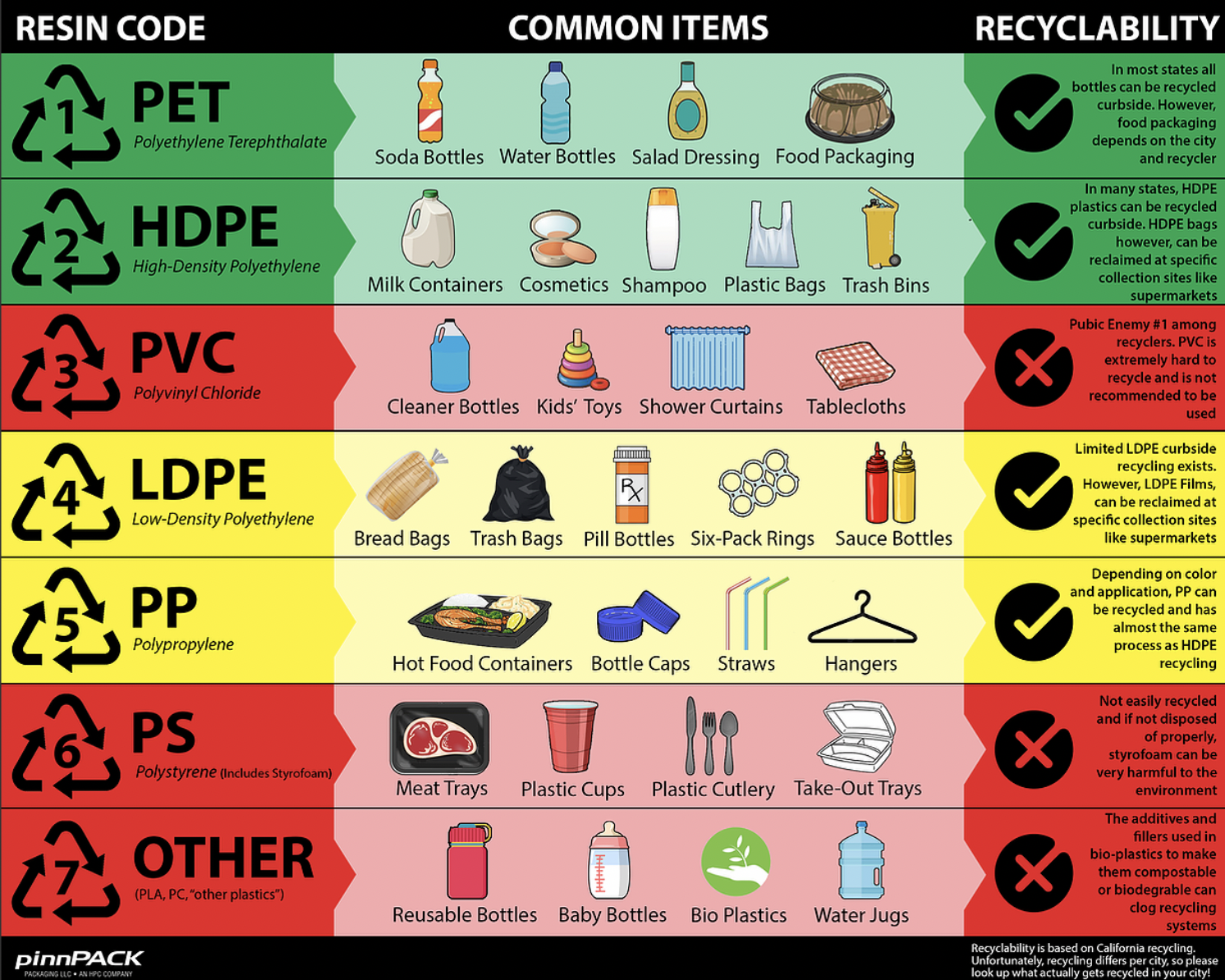There is a lot of misunderstanding around the meaning of that little triangle with a number in it. Some call it the “chasing arrows” symbol. Let’s set some things straight.
-
To date, only 9% of the plastic ever produced has been recycled.
-
In the U.S., only 8% of all plastic generated was recycled in 2017 (down from 9% in 2016)
- only 14% was collected for recycling, with a much smaller percentage (~2%) functionally recycled into new plastic packaging.
- The Ellen MacArthur Foundation estimated in 2017 that, globally, 95% of plastic packaging material value was lost after a single use
- Plastics can only be recycled once or twice. Recycled products will still have virgin plastic added for quality.

The chasing arrows symbol with the number in it identifies the type of plastic resin used in the product. That is it. This helps determine the appropriate management route for plastics. With our increasing use of plastics in our lives, much of it is not recyclable at all. With all the different types of plastic we use in our lives, recycling has become more confusing. How often do you find yourself standing in front of your recycling bin wondering “to bin or not to bin” a plastic container?

Let’s take "Styrofoam" for an example. Those to-go cups and containers we often call “Styrofoam” is actually expanded polystyrene, a little different than the actual trademark name StyrofoamTM. Expanded polystyrene is a plastic resin identified with the number 6 in the chasing arrows symbol. That is all it means. Expanded polystyrene is typically 95% air – that is why it is so light. Imagine filling a semi-truck with it. It takes up a lot of space and only a small fraction of it is recoverable. It is costly to handle and transport, with very little return on investment. Thus, it is not a desirable resin to recycle; therefore, not accepted for recycling in the majority of communities in the USA.